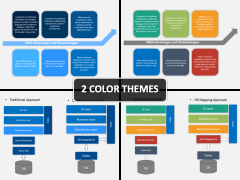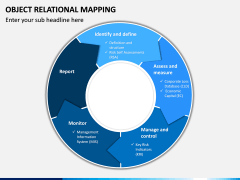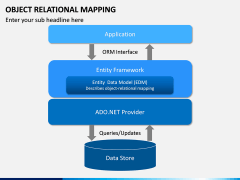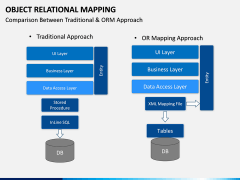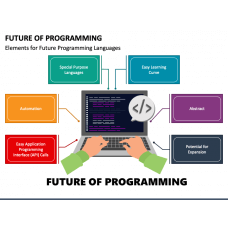Object Relational Mapping PowerPoint and Google Slides Template
(15 Editable Slides)
Object Relational Mapping PowerPoint and Google Slides Template
Available For
Key Features
- This comprehensive PowerPoint template on Object Relational Mapping is highly detailed and has covered all the major aspects of the subject.
- Our designers have come up with visually appealing graphics that will make your slideshows stunning and uniform-looking.
- You can readily use the entire set or clip out any illustration of your choice. It supports PowerPoint, Apple Keynote, and Google Slides.
- Furthermore, the entire presentation is available in different color themes. You can just pick the theme that suits your requirements to save your time.
- Making edits in the template is extremely easy. It is also based on a master slide to further make things easier for you.
To help you educate your audience about ORM, our experts have come up with this informative template. You can teach your audience how ORM works and its overall needs. You can also educate them about the implementation of ORM, its working model, relationship mapping, benefits, challenges, and more. With these PPT slides, you can also compare the traditional and object-oriented programming approach as well. Do so much more with the perfect visuals to grab your audience’s attention effortlessly.
Why should you download this template?
If you are related to programming in any way, then this would be a must-have template for you. Programming teachers, trainers, educators, consultants, managers, and all the other related professionals can make the most of this set. You can easily make your audience familiar with this concept and that too without spending your time.
Just use the entire set the way it is or make the needed edits. In no time, you can customize the template, add your own content, and do so much more. In this way, you would be able to impress your audience in less time and draft a memorable presentation for sure.
What is Object Relational Mapping (ORM)?
ORM is a widely used concept in object-oriented programming. It creates a virtual object database to connect the object-oriented programming elements with the traditional relational database. Therefore, you can consider it as a link between relational database and OOP. In this, high-level objects are created that are linked to database elements. The concept is closely associated with UML class modeling and object role modeling as well.


